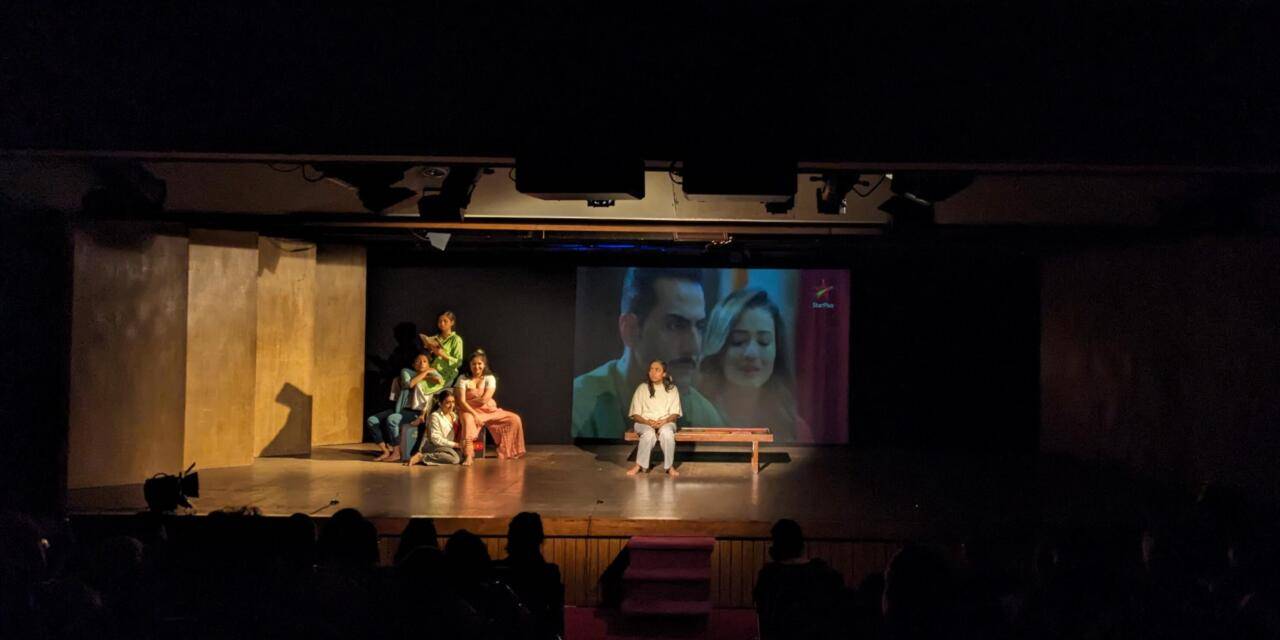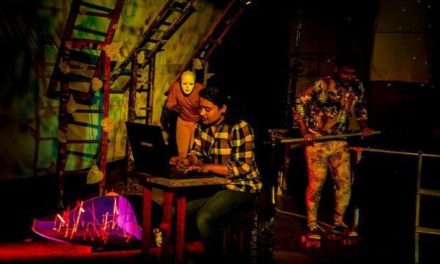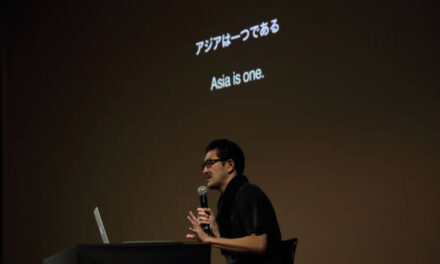The question of universality faces entire series of utterly new answers, but not all of them find a place or are given a form to be exhibited on stage, as it is frequently mistaken for relatability. The personal dilemmas of the young adult, struggling with societal expectations and not yet being able to see the world through the eyes of a more mature generation, did, however, see the limelight. Written and directed by Mallika Shah, produced by Meghana AT, and brought to the audiences by tafreehwale, in collaboration with NCPA Mumbai, I Killed My Mother/It Wasn’t My Fault plays with more than just words and dramatic situations, but with its audiences, too.
With a title that makes up for an entire marketing scheme, the show is centered around a 25-year-old main character, somewhere at the border between girl and woman, and revolves around the way she deals with a terrible argument with her mother. Unemployment, lack of “social survival” skills, singlehood, incapacity to stick to deadlines – all add up to the point where the two generations clash without any possibility of reconciliation. Or, in other words, the main character misses a meeting, loses her job, wants to go to a party, her mom does not agree; conflict. But if only life were so simple!
This is where Mallika Shah manages to reach the audiences and communicate with them on a deep level – she takes this basic plot, common and understandable beyond its outer image and gives physicality to the voices in one’s head, the four “she-wolves” representing possible outcomes in life – the personified Anxiety, the Enthusiasm, the Traditionally-Clothed-Housewife, and “The-One-Who-Has-The-Bad-Ideas.” With skillfully crafted humor, the play touches upon more than the conflict between a mother and her daughter, but takes the audience on a “trip” through promiscuous parties, “shitty jobs,” bad sex, self-esteem issues, technology addiction, and generalized misunderstanding.
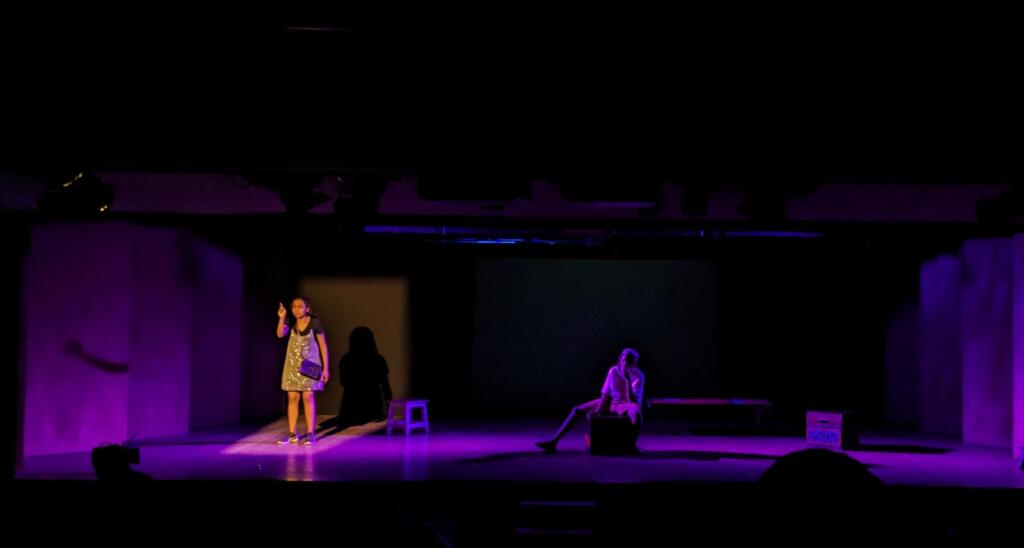
I Killed My Mother/It Wasn’t My Fault, written and directed by Mallika Shah, produced by Meghana AT. A tafreehwale production, presented at NCPA Mumbai.
Hilariously comical, with wordplay and very direct allusions to the unpleasant realities of India (and Romania, for that matter), such as the wife becoming the emotional punching bag of her husband or, if she’s lucky, the physical punching bag, with just enough swear words and phrases to sound realistic but not exaggerated, the text exhibits a maturely crafted balance, which, in turn, does not seem artificial, either, even if the main character’s world is falling apart. This equilibrium is, strangely, also supported by the presence of the only male performer – the short scene in Hindi involving the rickshaw driver succeeds the ones played in English, where even the male character (portrayed stereotypically and unapologetically grotesque) was played by one of the protagonist’s ever-present companions. He reinstates a bit of hope in the masculine side of life and adds to the poeticity of the entire spectacological construction.
Universality comes into play here through the capacity of the entire production to step away from the “Mumbai/India-coded” portrayal of young life, without, however, renouncing all recognizable aspects of the subcontinent. The story is, thus, understandable from various socio-cultural points of view, making sense even in contexts foreign to the world in which it was written and staged. The meaninglessness of frivolous human interaction, countered by unusually profound connections with strangers, does not depend on the existence of an auto rickshaw driver amidst the traffic of Mumbai, the increasingly loud self-criticism, which can only be silenced when alcohol is involved, or the frustration peaking in forms of extreme violence are not contextual, but rather aid in depicting situations and emotional states with a high degree of relatability.
This is where the importance of the text’s origin comes into discussion – drafted during the pandemic, I Killed My Mother/It Wasn’t My Fault was initially written at a time when most of the world’s youth was going through similar issues and were organically (although digitally) interconnected through social media, platforms that became means of sharing experiences, rather than counting likes and reactions. The fluidity of the set design helps, here, with contouring this feeling, of “generally-valid-story” that …It Wasn’t My Fault manages to convey – a simple, table-like bed, two boxes, and video projections, all of them anchored in “today” by stickers and messages that remind the audience of the stereotypical “Keep Out” placed on teenagers’ doors.
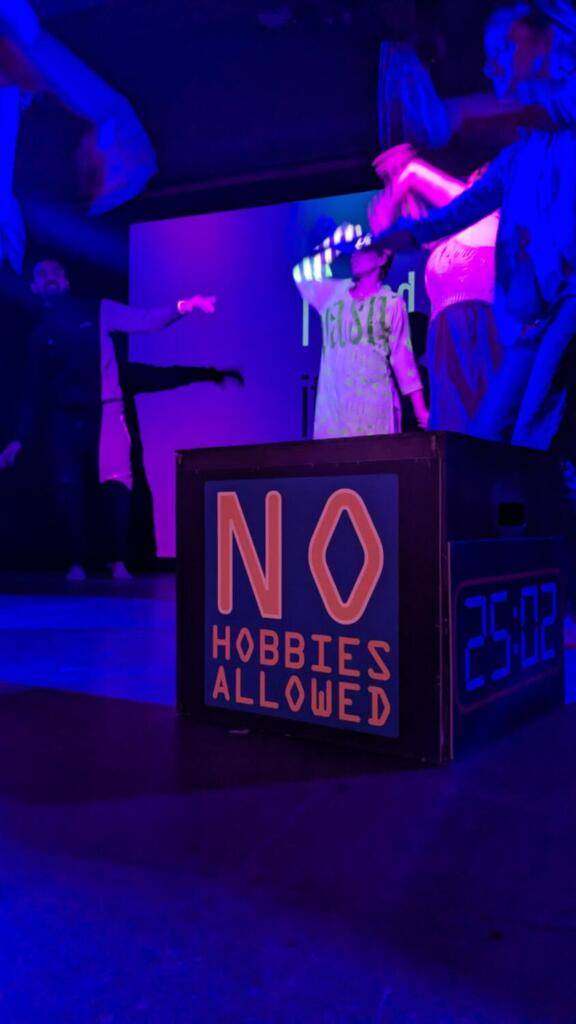
I Killed My Mother/It Wasn’t My Fault, written and directed by Mallika Shah, produced by Meghana AT. A tafreehwale production, presented at NCPA Mumbai.
The auditive universe of the production deserves a special, separate and dedicated paragraph in this review – the sound of the performance is going much farther than music (which itself blends Bollywood songs with Girls Just Wanna Have Fun and Hit Me Baby One More Time, the latter cleverly placed for a simple, obvious, yet highly comical effect), showcasing the noise of Mumbai’s traffic in a truthful, yet gentle manner, and using modulations to give depth and personality to the spaces where the action is taking place. The soundscape also adds to the funny-realistic aura of the life depicted on stage by combining the voices of the performers with the background noise of reels and of soap operas, omnipresent on what seems to be every family’s living room TV, during the most tense of moments.
I could not resist but wonder how come a 60-minute production with minimal set, rehearsed in the cast and crew’s homes due to the lack of a proper work space, can prove itself to be more than another “fresh take” on the already almost exhausted topic of “(female) coming-of-age?” I Killed My Mother/It Wasn’t My Fault is, from a foreigner’s perspective, a skillfully crafted example of decolonial theater practice, as it allows for both English and Hindi to have their spotlight moment, whilst also creating an environment that is accessible to locals and expats alike. This is, I believe, a great example of such practice, as it allows for more than one relatable perspective, without altering (let alone erasing!) the local colors, sounds, and social issues. It proves that, beyond the idiosyncrasies of certain social/political/economic contexts, there is a purely human underlying layer, accessible in spite of language barriers or difficult-to-understand cultural customs. Rooted in both Western and Indian theater-making, the play&production in question blends the two seamlessly, both in terms of text and staging, the audience being drawn to it and then having to face the fact that, in spite of all possible differences between them and the character, they, too, have been in similar situations, have had similar thoughts, have planned similar murders.
Ironically, the frivolousness the creators mention repeatedly in descriptions and explanations of the play dissolves in the face of the contextual adversity that (re)creating immediate reality can propose to theater-makers, emphasizing once again the inherent fear of the (marginal) female voices to publicly admit and accept their own contribution and impact. Overall, without any trace of explicit feminism (and the references to it that did make it to the stage being coated with humor or even ridiculed), I Killed My Mother/It Wasn’t My Fault reflects both the inner and outer world of more than just women in their mid-twenties, but of everybody who had/has dark dreams of escaping generational conflicts, or simply making the end justify the means.
This post was written by the author in their personal capacity.The opinions expressed in this article are the author’s own and do not reflect the view of The Theatre Times, their staff or collaborators.
This post was written by Teodora Medeleanu.
The views expressed here belong to the author and do not necessarily reflect our views and opinions.

